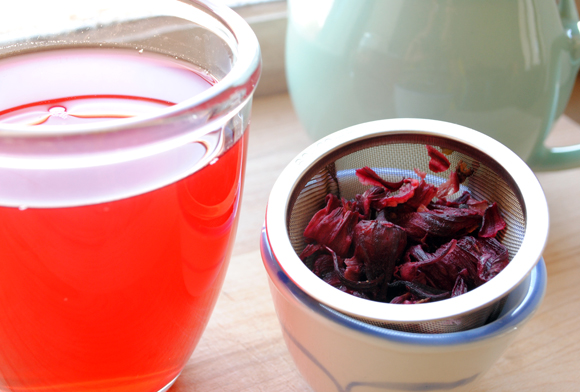
Besides talking and thinking about food, I dream of mint, matcha, oolong, pu-erh, ginger, darjeeling, and sencha tea to name only a few. Similar to my passion for rediscovering and developing classic recipes with real ingredients, I am curious about the origin tea. It started with purchasing inexpensive green tea bags in Chinatown. Over a few weeks, my complexion cleared. A friend would later tell me how green tea detoxes the blood. My interest in tea starts out of vanity, and it expands into how different teas benefit our health.
Across the blog universe, I discovered Alexis Siemon’s Teaspoons & Petals. Her writing is poetic and quaint. Reading her blog is similar to taking a tea break in a whirlwind of a busy day. My knowledge about tea skims the surface, but her passion for tea is deep. I invited Alexis to write a guest post, and she provided a collage of beautiful teapots.
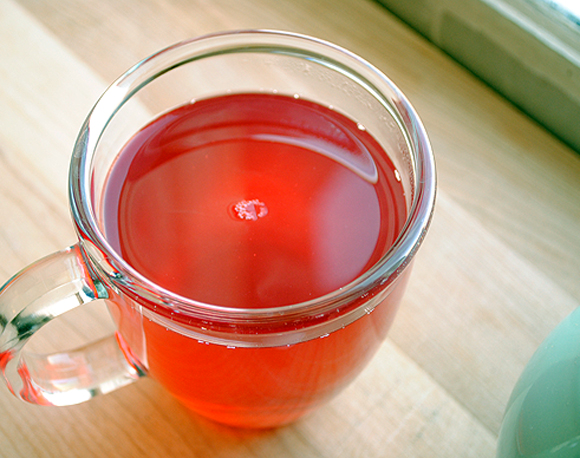
Often we think of tea in small bags, mostly full of dust. Most teas are more robust when larger leaves are loosely steeped in water that is short of boiling temperatures. It is visually relaxing to watch freshwater gradually change color from clear to greens, ambers, dark browns, yellows, or reds. Alexis chose pots, in which the enchantment of watching loose tea leaves unfurl is of a higher beauty.
Supposedly tea is making a comeback in the United States. After water, tea is the most consumed drink in the world before coffee. The act of making tea requires all movement, activity, and plans to be still. That small gesture of drinking tea is a relaxing moment most people need in their lives.
Guest Post by Alexis Siemons of Teaspoons & Petals:
We’re slowly creeping out from under our winter blankets, and taking a step into the sun in hopes that spring will arrive soon. Mirroring the change of seasons, I’m longing to replace malty black teas and wintry iron cups with floral steeps and delicate glass teaware.
The effortless elegance of my collection of glass teapots often reminds me that there is an art to the steep beyond the water temperature and proper timing. A visual delight, the tea leaves dance about and can paint the water shades of mellow green, vibrant amber, deep red, and gold, just to name just a few.
In honor of the shifting seasons, I’ve gathered a few of my favorite glass teaware pieces to welcome spring in style. Take a peek at the graceful curves and delicate lines that gently remind us that the tea glass (or pot) is always half full.
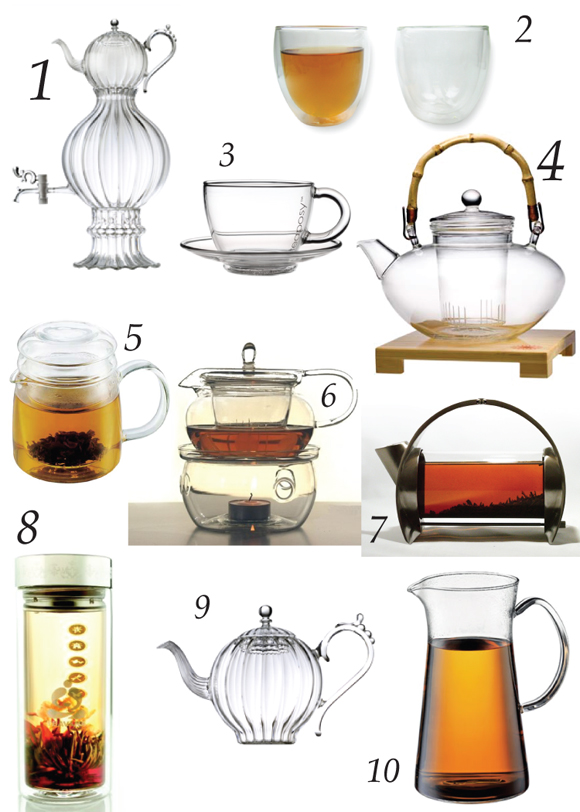
Above Image: 1. Happy Tzar Samovar Body & Teapot | 2. Double Walled Glass Tea Cups | 3. Tea for More Cup Saucer | 4. Tea for More Teapot | 5. The De Chine Small Tea Pot with Filter | 6. Clear Glass Teapot | 7. Sorapot | 8. Tea Rhapsody Glass Tea Tumbler | 9. Happy Tzar Teapot Hand Blown Glass | 10. Cin Cin Ice Tea Jug With Handle
Beyond the splendid shades of green from my favorite sencha steep, I recommend heading to your local spice shop for dried hibiscus flowers. The vibrant red liquor will truly revive your spring spirit long before the first bloom.
Thank you, Alexis, for taking the time to write a lovely and thoughtful post.
Loose Leaf Hibiscus Tea Sweetened with Cream Honey
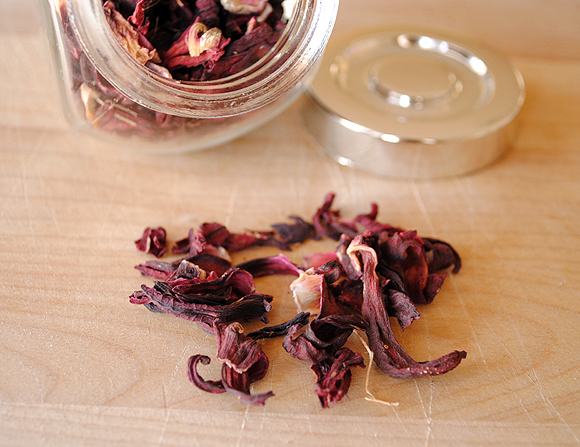
Ingredients for 2 to 3 cups of tea
1 to 2 tbsp. of loose leaf Hibiscus Flowers
(Optional) Honey to taste
2 cups of hot water
Directions
1. Add at least 1 tbsp. of hibiscus flowers to a teapot’s strainer. Add more hibiscus flowers if a stronger tea is desired. Place strainer in the teapot.
2. Pour hot water (never let the water boil for tea, it is ready when tiny air bubbles rise to the surface) over the tea leaves in the teapot.
3. Cover and let steep for 5 minutes.
4. When tea is finished steeping, decant tea. Place tea leaves aside if steeping for a second time (second steeping of tea leaves is 10 minutes) . Pour tea into individual cups and thoroughly mix in the desired amount of honey.
5. Enjoy.
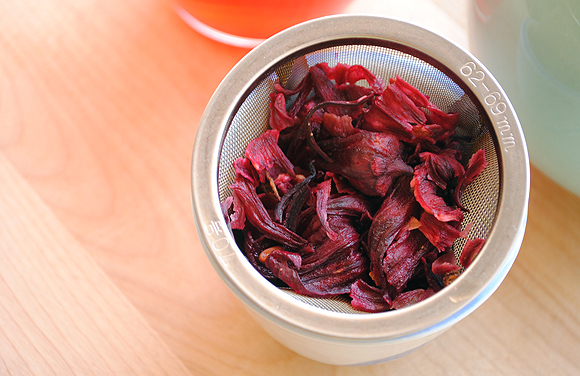
Note: For a cold brew (refreshing for the Summer), make tea very strong by adding about 6 tbsp. of hibiscus flowers to 2 cups of water, as in step 1. Decant after 5 minutes. Let cool to room temperature. Place in the refrigerator until chill. Serve cold and enjoy.
…
Stay up-to-date with yummy, new food posts from My Life Runs On Food via email. Subscribe today!
Chef and Steward, I {heart} sorrel! I am Jamaican by birth.
Alexis’s collection of glass tea ware is lovely and I especially like the Happy Tzar Teapot Hand Blown Glass.
I loooove to make this tea! We call it “sorrel” back home in Jamaica, even though others may know something else called sorrel. It is very popular around Christmas and New Year’s as a must have holiday drink and everybody makes it at home. Well… almost everyone. It is served hot and cold and I have some cold one fermenting slowly in the fridge as well as a huge jar of chutney. Will share our Jamaican recipes with you one day since you like this tea. By the way, it is really good for you. Very high in Resveratrol (same stuff in cranberries). And loose leaf is the best! Way to go!
Wow! That looks excellent and smells like it would be divine!